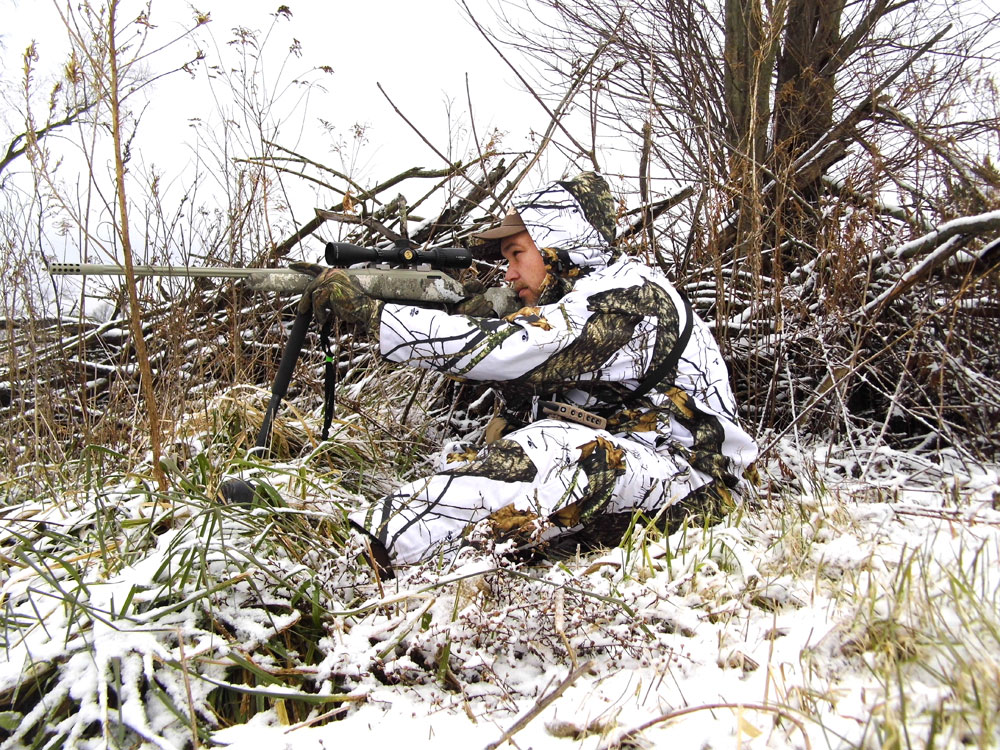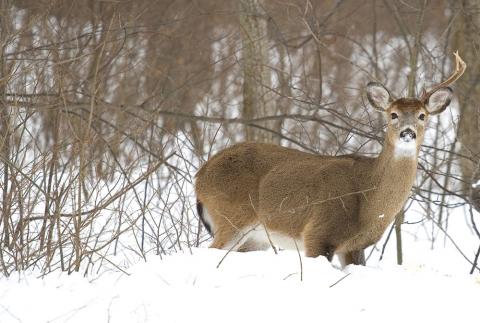provided by John E. Phillips
Steven Reinhold of Nova, Ohio, has been on the Mossy Oak ProStaff for 15 years and has a TV show on the Hunt Channel titled, “True Life Hunting Adventures,” on My Outdoor TV. Reinhold started out in the TV business in 2008. “I eventually dropped out of that business because my children were growing up and going to college, and I didn’t want to miss any family time,” Reinhold explains. Then in 2018, Reinhold’s older son, Mason Reinhold, wanted to get back into the TV business, so they cranked it up then.
I’ve often been asked how you self-film a predator hunt. We self-film predator hunts about the same way we do duck hunts. We’ll set up the big camera and a LIDCAM because generally the predators coming in fast can be seen on the LIDCAM best. If a predator’s coming in fast, using the big camera to pan in and pan out often can be difficult. You may be able to get some good footage with your big camera, but as the predator gets closer, the LIDCAM will pick up action that your big camera can’t. The LIDCAM will start filming the critter when it’s 70-80 yards out. Then, as the critter comes closer, the footage gets better and better, until you take the shot. We film coyotes, red foxes, raccoons and bobcats in Texas.
In seminars, I’m often asked, “What type of predator calls do you use and why?” In 2019, I used FOXPRO Electronic callers but in 2020 and 2021, I started using a Lucky Duck Revolt - a self-contained e-caller with a remote. This caller has a critter-getter decoy too on top of the caller that’s built right into the caller. It also has a swiveling base to allow you to turn the caller in different directions. This call actually mimics a prey species being attacked and dying. If you’ve ever watched a rabbit or a squirrel in distress or any type of prey species, they’ll often flip and flop in the mouth of a predator. This caller retails for about $389.
Another thing I like about this caller is it’s effective out to about 100 yards. I usually try and set-up the shot about 80 yards behind the caller. When I use this caller, much of the time I’ll be hunting with a shotgun, so I may sit even a little closer to the caller. My shotgun of choice is a Beretta A400 Extreme, and I shoot 3-inch Federal No. 6 shotgun shells. Many of the hunts we go on are close to houses or livestock, and I’ve found that when I’m hunting close, the shotgun is a better choice than a rifle. I feel like this gun and shotgun shell are the most effective when I’m about 50 or 60 yards from the animal I’m hunting – particularly in small, thick-covered areas where predators like to hold - especially during daylight hours.
On a good day, we will usually make 8 or 9 setups to call in and film a predator hunt. After we set-up our caller and get hidden in our Mossy Oak camouflage, we’ll turn on the caller and stay in that location for 15 or 20 minutes before we move to the next call-in spot. Most of our hunts are at first light until later in the morning and then late in the evening, just before dark. I have hunted predators at night, but I’ve found that I am more successful at night taking predators early and late. I believe that in the mornings, the predators either are trying to find something to eat or go to bed. Then just before dark, a predator will leave his bed and come out looking for something to eat. Also the light’s better early in the morning and late in the evening, and we’ll get better film footage.
I use a Manfrotto Tripod for my camera when I’m duck hunting or predator hunting, and that tripod has a Manfrotto head on it where I attach my camera. This tripod has a link remote and a fluid head. Then I can adjust where the camera is pointed without having to move the camera myself. Another advantage to the Manfrotto tripod is that it is all aluminum and weighs very little.



























